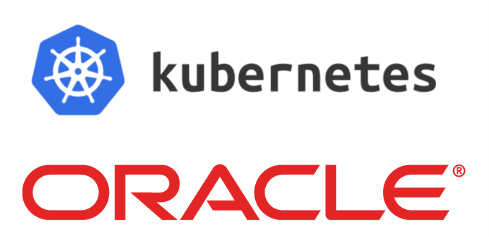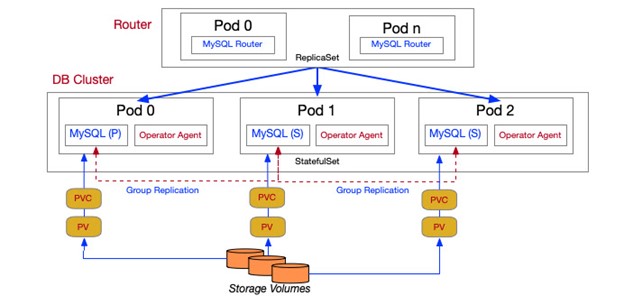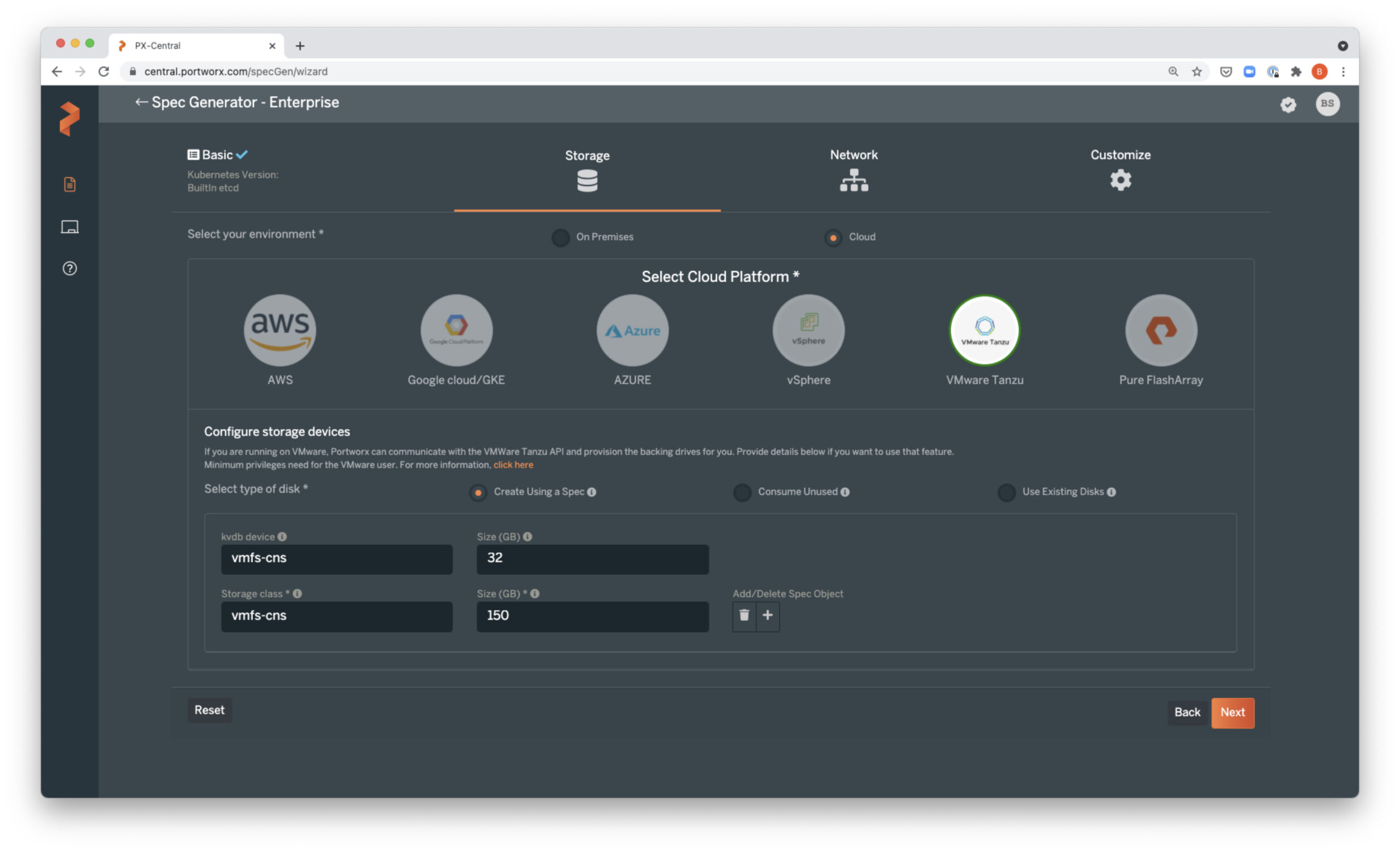
Background
Today there are a number of different MySQL Kubernetes Operators available for use, many providing similar functionality with varying development effort and support offerings, for example Percona, PressLabs, GrdsCloud, Moco to name a few.
However, for the purpose of this post I am going to be using the official MySQL Kubernetes Operator developed by the Oracle MySQL team to manage the setup of a MySQL InnoDB Cluster.
Using MySQL operators, Kubernetes users can manage MySQL InnoDB database connections from within clusters. This includes use of the common operators MySQL logical operator, MySQL comparison operator, MySQL ‘and’ operator, and standard SQL operations.
Please note at the time of writing (Sept 21) this is in a ‘preview state’ and therefore should not be considered for Production usage, the GA release is expected later this year.
Kubernetes Environment
Before applying the MySQL Custom Resource Definition (CRD) and Operator, let’s have a quick look at my Oracle Cloud Infrastructure (OCI) Oracle Container Engine for Kubernetes (OKE) environment.
The Kubernetes version with kubectl version
% kubectl version --short | awk -Fv '/Server Version: / {print $3}'
1.20.8
Number of nodes, operating system, and container runtime in the Kubernetes Cluster with kubectl get nodes.
% kubectl get nodes -o wide NAME STATUS ROLES AGE VERSION INTERNAL-IP EXTERNAL-IP OS-IMAGE KERNEL-VERSION CONTAINER-RUNTIME 10.0.10.173 Ready node 41h v1.20.8 10.0.10.173 <none> Oracle Linux Server 7.6 4.14.35-1902.2.0.el7uek.x86_64 cri-o://1.20.2 10.0.10.225 Ready node 41h v1.20.8 10.0.10.225 <none> Oracle Linux Server 7.6 4.14.35-1902.2.0.el7uek.x86_64 cri-o://1.20.2 10.0.10.68 Ready node 41h v1.20.8 10.0.10.68 <none> Oracle Linux Server 7.6 4.14.35-1902.2.0.el7uek.x86_64 cri-o://1.20.2
And Portworx version using pxctl –version
% pxctl --version pxctl version 2.8.0.0-1ef62f8
Storage Class
Let’s start by creating a Portworx Kubernetes Container Storage Interface (CSI) storage class.
% cat px-mysql-csi-sc.yaml kind: StorageClass apiVersion: storage.k8s.io/v1 metadata: name: px-mysql-csi-sc provisioner: pxd.portworx.com parameters: repl: "1" io_profile: "auto"
And apply with kubectl apply
% kubectl apply -f px-mysql-csi-sc.yaml storageclass.storage.k8s.io/px-mysql-csi-sc created
We can examine the settings with kubectl describe, for example, from the below you can see I have a replication factor of 1 and io_profile of auto.
% kubectl describe sc/px-mysql-csi-sc
Name: px-mysql-csi-sc
IsDefaultClass: No
Annotations: kubectl.kubernetes.io/last-applied-configuration={"apiVersion":"storage.k8s.io/v1","kind":"StorageClass","metadata":{"annotations":{},"name":"px-mysql-csi-sc"},"parameters":{"io_profile":"auto","repl":"1"},"provisioner":"pxd.portworx.com"}
Provisioner: pxd.portworx.com
Parameters: io_profile=auto,repl=1
AllowVolumeExpansion: <unset>
MountOptions: <none>
ReclaimPolicy: Delete
VolumeBindingMode: Immediate
Events: <none>
You can list the StorageClasses in your cluster with kubectl get sc, the default StorageClass is marked with (default) for example:
% kubectl get sc NAME PROVISIONER RECLAIMPOLICY VOLUMEBINDINGMODE ALLOWVOLUMEEXP AGE oci (default) oracle.com/oci Delete Immediate false 20h oci-bv blockvolume.csi.oraclecloud.com Delete WaitForFirstConsumer false 20h px-csi-sc pxd.portworx.com Delete Immediate false 20h px-db kubernetes.io/portworx-volume Delete Immediate true 20h px-db-cloud-snapshot kubernetes.io/portworx-volume Delete Immediate true 20h px-db-cloud-snapshot-encrypted kubernetes.io/portworx-volume Delete Immediate true 20h px-db-encrypted kubernetes.io/portworx-volume Delete Immediate true 20h px-db-local-snapshot kubernetes.io/portworx-volume Delete Immediate true 20h px-db-local-snapshot-encrypted kubernetes.io/portworx-volume Delete Immediate true 20h px-mysql-csi-sc pxd.portworx.com Delete Immediate false 17m px-replicated kubernetes.io/portworx-volume Delete Immediate true 20h px-replicated-encrypted kubernetes.io/portworx-volume Delete Immediate true 20h stork-snapshot-sc stork-snapshot Delete Immediate true 20h
Out-of-the box the Kubernetes MySQL Operator will use the default storage class, however it can be stored at an alternative StorageClass by changing the default by using kubectl patch to set is-default-class.
First set is-default-class for the current default Storage Class to false, for example.
% kubectl patch storageclass oci -p '{"metadata": {"annotations":{"storageclass.kubernetes.io/is-default-class":"false"}}}'
storageclass.storage.k8s.io/oci patched
And then update the preferred Storage Class is-default-class to true.
% kubectl patch storageclass px-mysql-csi-sc -p '{"metadata": {"annotations":{"storageclass.kubernetes.io/is-default-class":"true"}}}'
storageclass.storage.k8s.io/px-mysql-csi-sc patched
We can see the change with kubectl get storageclass
% kubectl get storageclass NAME PROVISIONER RECLAIMPOLICY VOLUMEBINDINGMODE ALLOWVOLUMEEXP AGE ... oci oracle.com/oci Delete Immediate false 20h px-mysql-csi-sc (default) pxd.portworx.com Delete Immediate false 28m
Installation
OK now let’s install the Oracle MySQL Custom Resource Definition (CRD) and Operator.
For this blog I will install directly into my OKE Kubernetes Cluster using kubectl apply.
% kubectl apply -f https://raw.githubusercontent.com/mysql/mysql-operator/trunk/deploy/deploy-crds.yaml customresourcedefinition.apiextensions.k8s.io/innodbclusters.mysql.oracle.com created customresourcedefinition.apiextensions.k8s.io/mysqlbackups.mysql.oracle.com created customresourcedefinition.apiextensions.k8s.io/clusterkopfpeerings.zalando.org created customresourcedefinition.apiextensions.k8s.io/kopfpeerings.zalando.org created And again using kubectl apply to deploy operator. % kubectl apply -f https://raw.githubusercontent.com/mysql/mysql-operator/trunk/deploy/deploy-operator.yaml serviceaccount/mysql-sidecar-sa created clusterrole.rbac.authorization.k8s.io/mysql-operator created clusterrole.rbac.authorization.k8s.io/mysql-sidecar created clusterrolebinding.rbac.authorization.k8s.io/mysql-operator-rolebinding created clusterkopfpeering.zalando.org/mysql-operator created namespace/mysql-operator created serviceaccount/mysql-operator-sa created deployment.apps/mysql-operator created
From the above we can see a number of service accounts and a new namespace called mysql-operator has been created.
GitHub method
Alternatively, the Oracle MySQL CRD and Operator can also be downloaded from GitHub
# git clone https://github.com/mysql/mysql-operator Cloning into 'mysql-operator'... remote: Enumerating objects: 1065, done. remote: Counting objects: 100% (1065/1065), done. remote: Compressing objects: 100% (370/370), done. remote: Total 1065 (delta 682), reused 1064 (delta 681), pack-reused 0 Receiving objects: 100% (1065/1065), 4.60 MiB | 677.00 KiB/s, done. Resolving deltas: 100% (682/682), done. # cd /root/mysql-operator/deploy # ls -l total 20 -rw-r--r-- 1 root root 8888 Jul 20 09:25 deploy-crds.yaml -rw-r--r-- 1 root root 2905 Jul 20 09:25 deploy-operator.yaml -rwxr-xr-x 1 root root 3347 Jul 20 09:25 patch_deployment.py
And then install using the kubectl apply as before.
Custom Resource Definitions
If we use kubectl get crd to list all Custom Resource Definitions, we can now see the four new CRDs
% kubectl get crd NAME CREATED AT actionapprovals.autopilot.libopenstorage.org 2021-08-16T16:24:48Z applicationbackups.stork.libopenstorage.org 2021-08-16T16:25:44Z applicationbackupschedules.stork.libopenstorage.org 2021-08-16T16:26:00Z applicationclones.stork.libopenstorage.org 2021-08-16T16:25:55Z applicationregistrations.stork.libopenstorage.org 2021-08-16T16:25:39Z applicationrestores.stork.libopenstorage.org 2021-08-16T16:25:50Z autopilotruleobjects.autopilot.libopenstorage.org 2021-08-16T16:24:43Z autopilotrules.autopilot.libopenstorage.org 2021-08-16T16:24:43Z backuplocations.stork.libopenstorage.org 2021-08-16T16:25:34Z clusterdomainsstatuses.stork.libopenstorage.org 2021-08-16T16:25:24Z clusterdomainupdates.stork.libopenstorage.org 2021-08-16T16:25:29Z clusterkopfpeerings.zalando.org 2021-08-17T12:32:41Z clusterpairs.stork.libopenstorage.org 2021-08-16T16:25:14Z groupvolumesnapshots.stork.libopenstorage.org 2021-08-16T16:25:09Z innodbclusters.mysql.oracle.com 2021-08-17T12:32:39Z kopfpeerings.zalando.org 2021-08-17T12:32:41Z migrations.stork.libopenstorage.org 2021-08-16T16:25:19Z migrationschedules.stork.libopenstorage.org 2021-08-16T16:25:19Z mysqlbackups.mysql.oracle.com 2021-08-17T12:32:40Z namespacedschedulepolicies.stork.libopenstorage.org 2021-08-16T16:24:53Z rules.stork.libopenstorage.org 2021-08-16T16:24:43Z schedulepolicies.stork.libopenstorage.org 2021-08-16T16:24:48Z storageclusters.core.libopenstorage.org 2021-08-16T16:23:10Z storagenodes.core.libopenstorage.org 2021-08-16T16:23:16Z volumeplacementstrategies.portworx.io 2021-08-16T16:24:01Z volumesnapshotdatas.volumesnapshot.external-storage.k8s.io 2021-08-16T16:24:58Z volumesnapshotrestores.stork.libopenstorage.org 2021-08-16T16:25:04Z volumesnapshots.volumesnapshot.external-storage.k8s.io 2021-08-16T16:24:58Z volumesnapshotschedules.stork.libopenstorage.org 2021-08-16T16:24:59Z
Review details
Use kubectl get deployment / deploy to confirm we have an mysql-operator deployment.
% kubectl get deployment -n mysql-operator NAME READY UP-TO-DATE AVAILABLE AGE mysql-operator 1/1 1 1 27m
And kubectl get pod to get the the MySQL operator pod name
% kubectl get pods -n mysql-operator NAME READY STATUS RESTARTS AGE mysql-operator-6fd4df855f-zqmgh 1/1 Running 0 28m
Using kubectl describe we can see the deployment is using a MySQL 8.0.25 image from the Docker Hub repository.
% kubectl describe deployment/mysql-operator -n mysql-operator Name: mysql-operator Namespace: mysql-operator CreationTimestamp: Tue, 17 Aug 2021 13:33:16 +0100 Labels: version=1.0 Annotations: deployment.kubernetes.io/revision: 1 Selector: name=mysql-operator Replicas: 1 desired | 1 updated | 1 total | 1 available | 0 unavailable StrategyType: RollingUpdate MinReadySeconds: 0 RollingUpdateStrategy: 25% max unavailable, 25% max surge Pod Template: Labels: name=mysql-operator Service Account: mysql-operator-sa Containers: mysql-operator: Image: mysql/mysql-operator:8.0.25-2.0.1 Port: <none> Host Port: <none> Args: mysqlsh --log-level=@INFO --pym mysqloperator operator Environment: <none> Mounts: <none> Volumes: <none> Conditions: Type Status Reason ---- ------ ------ Available True MinimumReplicasAvailable Progressing True NewReplicaSetAvailable OldReplicaSets: <none> NewReplicaSet: mysql-operator-6fd4df855f (1/1 replicas created) Events: Type Reason Age From Message ---- ------ ---- ---- ------- Normal ScalingReplicaSet 29m deployment-controller Scaled up replica set mysql-operator-6fd4df855f to 1
Creating InnoDB Cluster
Now we have a MySQL Operator deployed, so we can create an InnoDB Cluster.
Create Kubernetes Secret
Create a Kubernetes secret to store the MySQL root password using the kubectl create secret command or the example yaml file below to create a secret called mypwds
# cat mysql-secret.yaml apiVersion: v1 kind: Secret metadata: name: mypwds stringData: rootUser: root rootHost: '%' rootPassword: MySQL202! % kubectl apply -f mysql-secret.yaml secret/mypwds created
Setup MySQL InnoDB Cluster
The MySQL operator will create:
- A statefulset and service for the MySQL server called mycluster.
- pods mycluster-0..2
- sidecar container agents
- A replicaSet for the MySQL router called mycluster-router
- pods mycluster-router-0, mysqlcluster-router-1
- A service for the MySQL InnoDB Cluster called mycluster
The example below will create a 3 node MySQL InnoDB Cluster with 2 MySQL routers using the secret previously created.
% cat mysql-cluster.yaml apiVersion: mysql.oracle.com/v2alpha1 kind: InnoDBCluster metadata: name: mycluster spec: secretName: mypwds instances: 3 router: instances: 2

MySQL Architecture
% kubectl apply -f mysql-cluster.yaml innodbcluster.mysql.oracle.com/mycluster created
Use –watch or -w flag to start watching updates, from here we can see the 3 instances and 2 routers previously defined.
% kubectl get innodbcluster --watch NAME STATUS ONLINE INSTANCES ROUTERS AGE ... mycluster ONLINE 3 3 2 9m30s
Persistent Volume Claims
We can see the MySQL Operator created multiple 2GB ‘DATA’ Persistent Volume Claim (PVC) using the px-mysql-csi-sc StorageClass.
% kubectl get pvc NAME STATUS VOLUME CAPACITY ACCESS MODES STORAGECLASS AGE datadir-mycluster-0 Bound pvc-25ffa7e2-fb1f-4261-a26d-2fec8e2e5d89 2Gi RWO px-mysql-csi-sc 47m datadir-mycluster-1 Bound pvc-d702b083-86c6-4355-afa1-67f8a7876dad 2Gi RWO px-mysql-csi-sc 40m datadir-mycluster-2 Bound pvc-f54d399d-afca-4ff7-9bc5-0b1317d57ed4 2Gi RWO px-mysql-csi-sc 18m
We can also see the newly provisioned volume from Portworx using pxctl volume list.
% pxctl volume list ID NAME SIZE HA SHARED ENCRYPTED PROXY-VOLUME IO_PRIORITY STATUS SNAP-ENABLED 876981642026201908 pvc-25ffa7e2-fb1f-4261-a26d-2fec8e2e5d89 2 GiB 1 no no no LOW up - attached on 10.0.10.68 no 372385243185435194 pvc-d702b083-86c6-4355-afa1-67f8a7876dad 2 GiB 1 no no no LOW up - attached on 10.0.10.225 no 120683905232179905 pvc-f54d399d-afca-4ff7-9bc5-0b1317d57ed4 2 GiB 1 no no no LOW up - attached on 10.0.10.173 no
MySQL InnoDB Cluster
We can use kubectl get service to determine ports being used.
% kubectl get service mycluster NAME TYPE CLUSTER-IP EXTERNAL-IP PORT(S) AGE mycluster ClusterIP 10.96.4.210 <none> 6446/TCP,6448/TCP,6447/TCP,6449/TCP 8m23s % kubectl describe service mycluster Name: mycluster Namespace: kube-system Labels: mysql.oracle.com/cluster=mycluster tier=mysql Annotations: <none> Selector: component=mysqlrouter,mysql.oracle.com/cluster=mycluster,tier=mysql Type: ClusterIP IP Families: <none> IP: 10.96.4.210 IPs: 10.96.4.210 Port: mysql 6446/TCP TargetPort: 6446/TCP Endpoints: 10.244.0.136:6446,10.244.1.8:6446 Port: mysqlx 6448/TCP TargetPort: 6448/TCP Endpoints: 10.244.0.136:6448,10.244.1.8:6448 Port: mysql-ro 6447/TCP TargetPort: 6447/TCP Endpoints: 10.244.0.136:6447,10.244.1.8:6447 Port: mysqlx-ro 6449/TCP TargetPort: 6449/TCP Endpoints: 10.244.0.136:6449,10.244.1.8:6449 Session Affinity: None Events: <none>
Summary
In this post I have shared how we can use Oracle MySQL Kubernetes Operator to create an MySQL InnoDB cluster on Kubernetes with Portworx storage.
Share
Subscribe for Updates
About Us
Portworx is the leader in cloud native storage for containers.
Thanks for subscribing!

Ron Ekins
Principal Field Solutions Architect | Office of the CTO, Pure Storage
Portworx Sharedv4 Service Volumes: Machine Learning with Keras Using Tensorflow and GPUs on Amazon EKS






